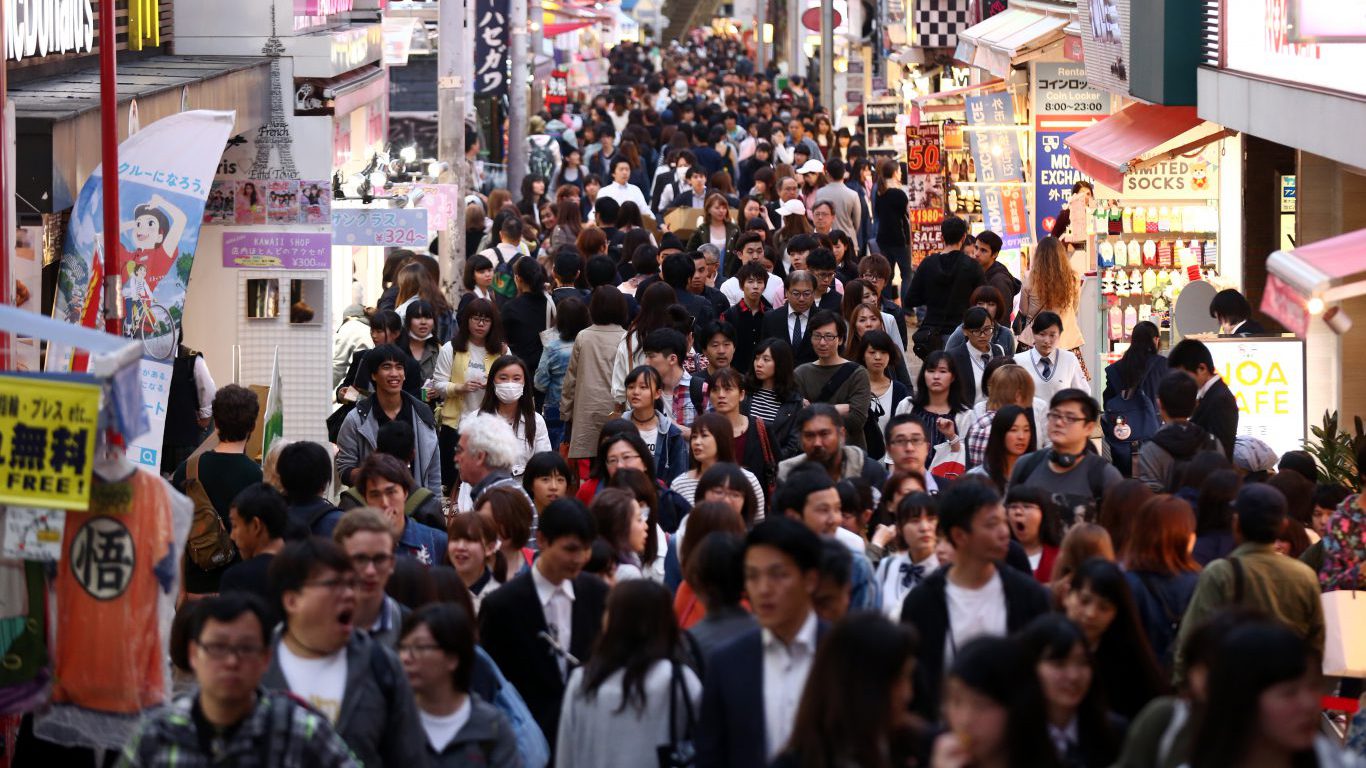
The world’s population continues to increase, especially in its cities. By 2050, it is estimated that 66% of people in the world will live in urban areas, compared to 54% today. These more populated areas offer better educational opportunities, greater access to health care, and promising career prospects.
While there are many advantages to living in large cities, the constant influx of new residents can result in significant challenges to urban development. People packed into small spaces exacerbates pollution and other health issues, taxes public transportation infrastructure, and drives up the price of living.
Despite these problems, the allure of the big city is still enticing for many, forcing some urban centers — and the major metropolitan areas surrounding them — to take on more people than they were originally designed to handle.
To determine the most crowded cities in the world, 24/7 Wall St. reviewed the United Nations’ Demographic Yearbook and ranked the cities on the number of residents per square mile.
Click here to see the 30 most crowded cities in the world.
Click here to see our detailed findings and methodology.

30. Medellín, Colombia
> Population: 2.4 million
> Land area: 149.4 square miles
> People per square mile: 16,642.3
Decades ago, Medellín, Colombia developed a dangerous reputation as a hotbed of violence from drug cartels and guerilla rebels. Now, the city and its surrounding area is flourishing. The Medellín metro area grew by more than 1 million people from 2000 to 2015. People who left the city for educational and business opportunities have returned and helped improve the city now that the violence has abated. Medellín, which sits between multiple mountain ranges is nicknamed the “City of Eternal Spring” for its pleasant climate.
[in-text-ad]
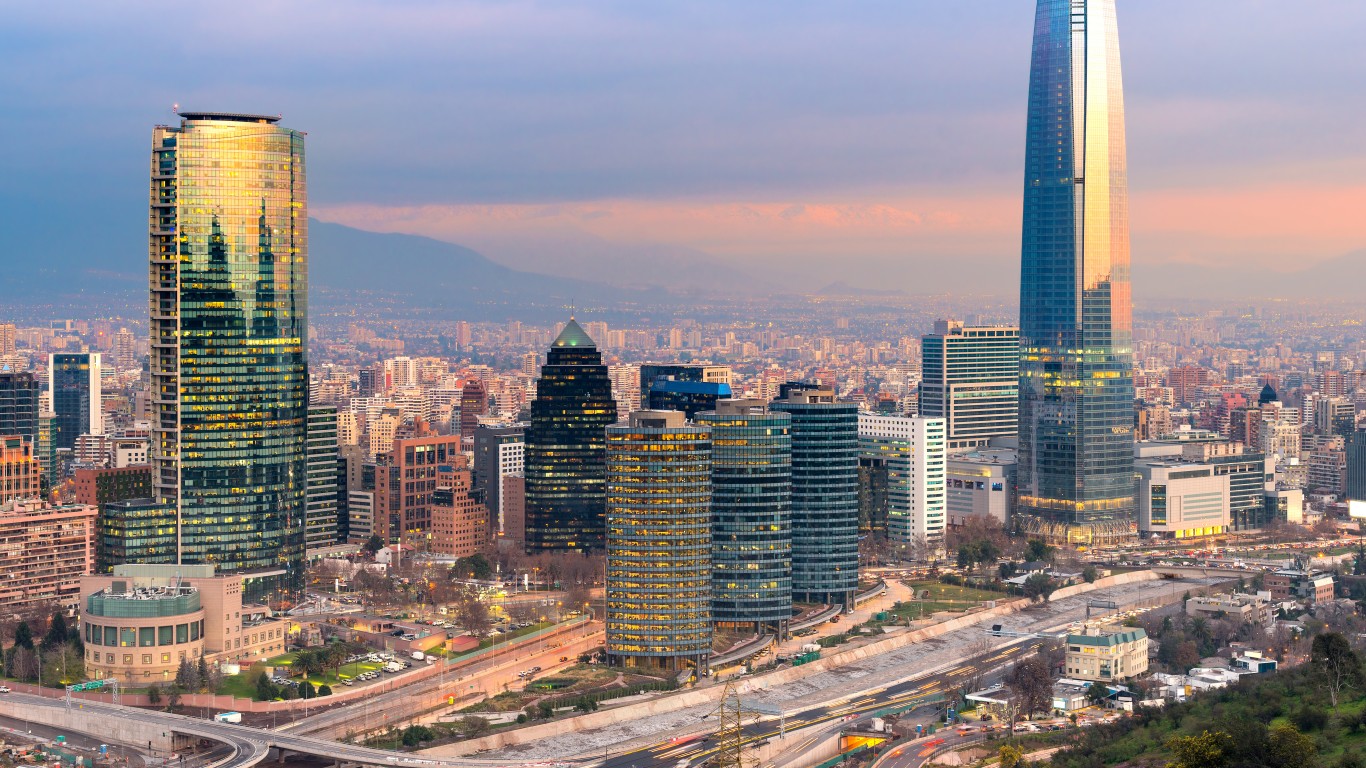
29. Santiago, Chile
> Population: 5.6 million
> Land area: 325.5 square miles
> People per square mile: 17,086.1
Santiago, Chile’s capital city, lies in the middle of the largely-coastal South American country. The city sits in between mountains to the east and the Pacific Ocean to the west. It is the southernmost city that is also among the world’s most crowded. The Santiago area’s population grew dramatically in the late 20th century. From 1970 to 2000, the city gained about 100,000 residents per year on average.
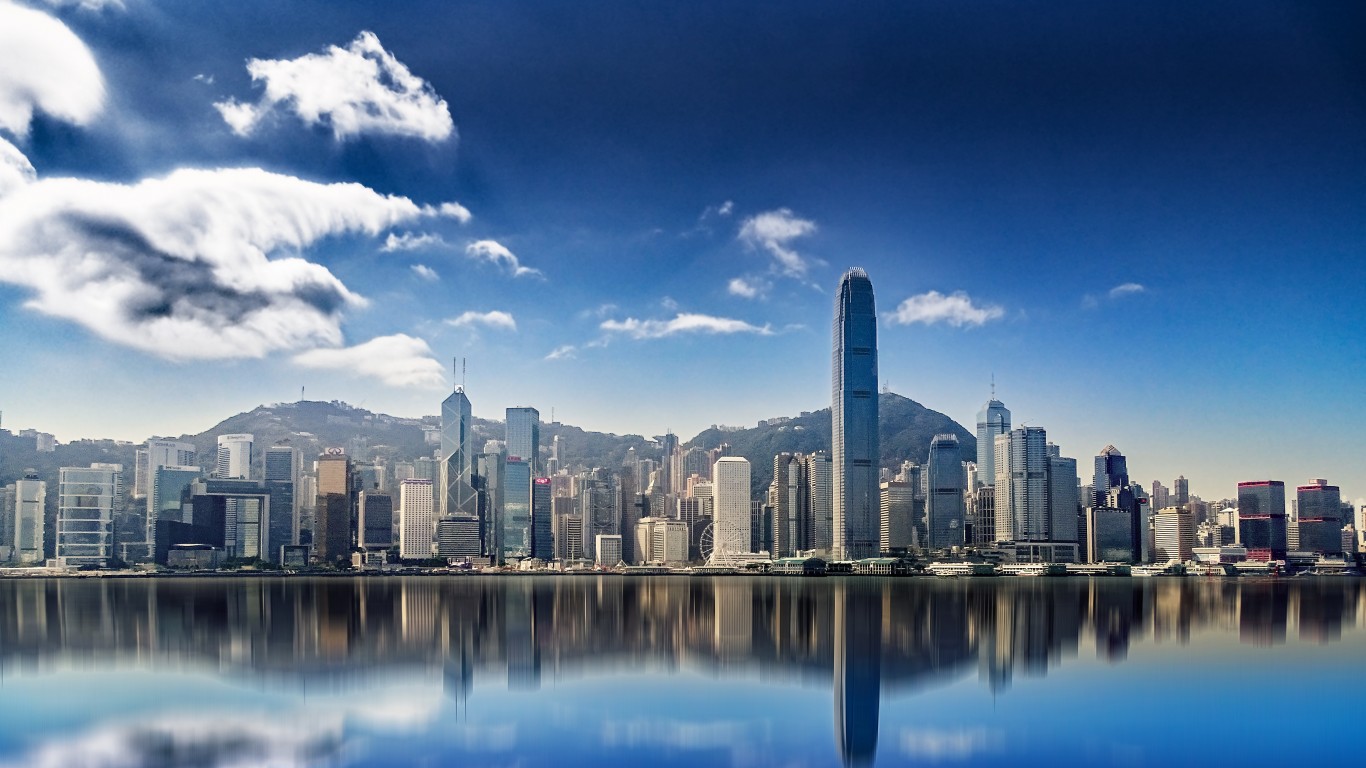
28. Hong Kong SAR, Hong Kong
> Population: 7.3 million
> Land area: 427.0 square miles
> People per square mile: 17,180.6
Hong Kong has one of the more unique governmental structures in the world. The city is somewhat autonomous, but also a special administrative region of China. Great Britain controlled the former colony for nearly a century before ceding it to China in 1997. It is one of the largest hubs for shipping in the world, thanks to its location in the South China Sea, and it has attracted a sizeable population of foreign workers. The name “Hong Kong” means “fragrant harbor” or “spice harbor” in Cantonese.

27. Guayaquil, Ecuador
> Population: 2.5 million
> Land area: 142.5 square miles
> People per square mile: 17,767.5
Guayaquil was originally founded in the area that would become Ecuador in 1537 when Spanish conquistadors settled there. The city is now the most populous in Ecuador, possibly because of its importance as a port. Some 90% of Ecuadorian imports travel through Guayaquil. It is also a hub of manufacturing and sugar refining.
[in-text-ad-2]

26. Nagoya, Japan
> Population: 2.3 million
> Land area: 125.9 square miles
> People per square mile: 18,238.3
Nagoya is one of Japan’s most important industrial cities. It serves as a hub of manufacturing for everything from ceramics to cars and airplanes. These job opportunities have led to 2.3 million people living in Nagoya’s 125.9 miles of land, making it one of the most crowded places in the world. However, this industrial focus has led to an unfortunate consequence for Nagoya: it is considered very boring. The city’s mayor even said “Nagoya is considered a place people don’t want to visit.” Among the largest Japanese cities, Nagoya finished last in a survey of the most appealing travel destinations.

25. Bucharest, Romania
> Population: 1.8 million
> Land area: 92.7 square miles
> People per square mile: 19,952.8
Bucharest is Romania’s capital and most populous city. It was once known as “Little Paris” because of its French-inspired architecture. Romania was ruled by dictator Nicolae Ceaușescu for more than 20 years, beginning in the late 1960s. Political dissenters were violently suppressed and Romania suffered repeated food shortages under his rule. Ceaușescu’s regime was overthrown in 1989 and he and his wife were executed. Since then, the city is slowly returning to its former splendor. Romania is becoming more active on the world stage, joining NATO and the EU in 2004 and 2007, respectively.
[in-text-ad]

24. Singapore, Singapore
> Population: 5.6 million
> Land area: 277.6 square miles
> People per square mile: 20,198.6
Singapore is an autonomous city-state located in between Malaysia and Indonesia. For many years, it was a British territory, crucial for shipping and trading in southeast Asia. Singapore’s port is one of the busiest in the world, likely making it one of the world’s wealthiest countries. Many of Singapore’s residents are not natives. The country predicts that, by 2030, half of Singapore residents will be immigrants.
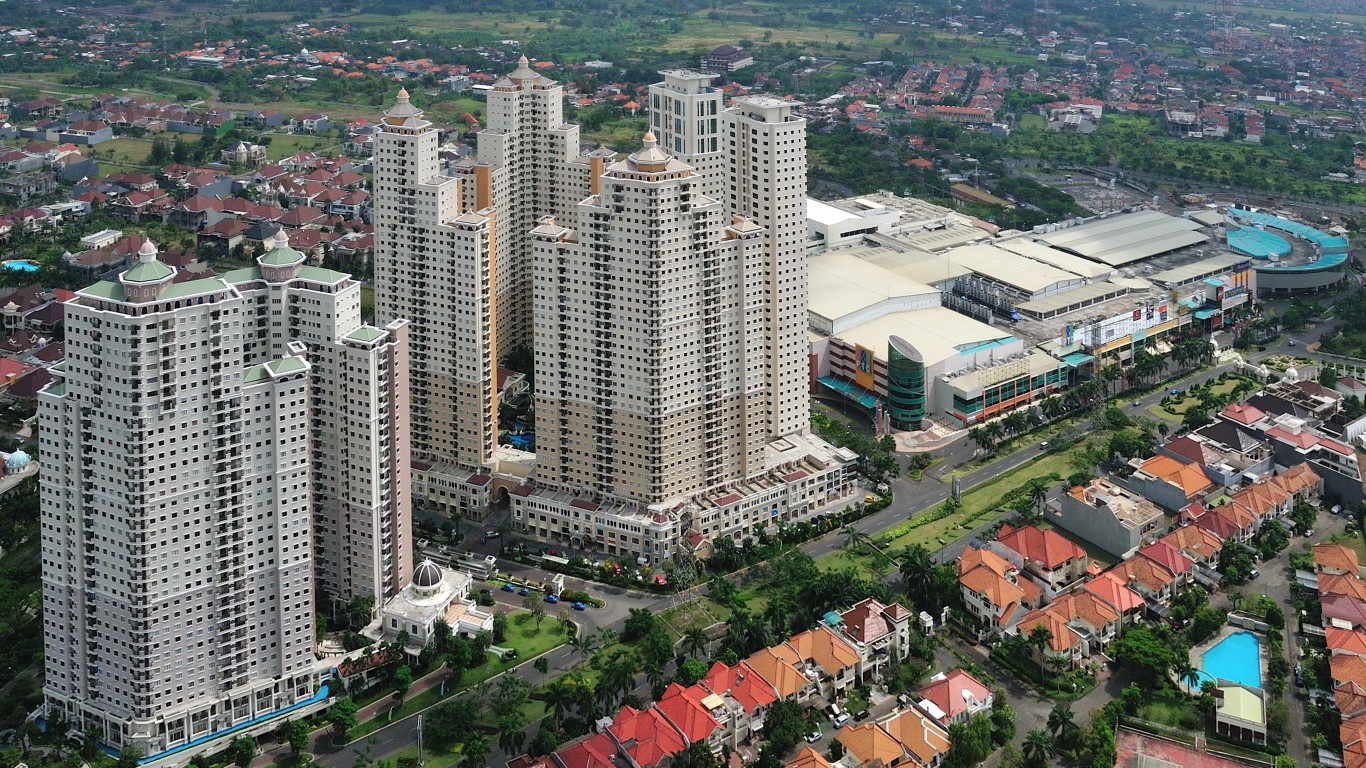
23. Surabaya, Indonesia
> Population: 2.9 million
> Land area: 135.5 square miles
> People per square mile: 21,212.1
Surabaya is one of many Indonesian cities that are among the world’s most crowded. Some 2.9 million people occupy a space of 135.5 square miles, meaning there are more than 21,000 people per square mile. That high population density led to heavy traffic on the city’s streets. In 2015, a global survey found that Surabaya has the worst congestion in the world with an average of 29,880 traffic jams per car annually.
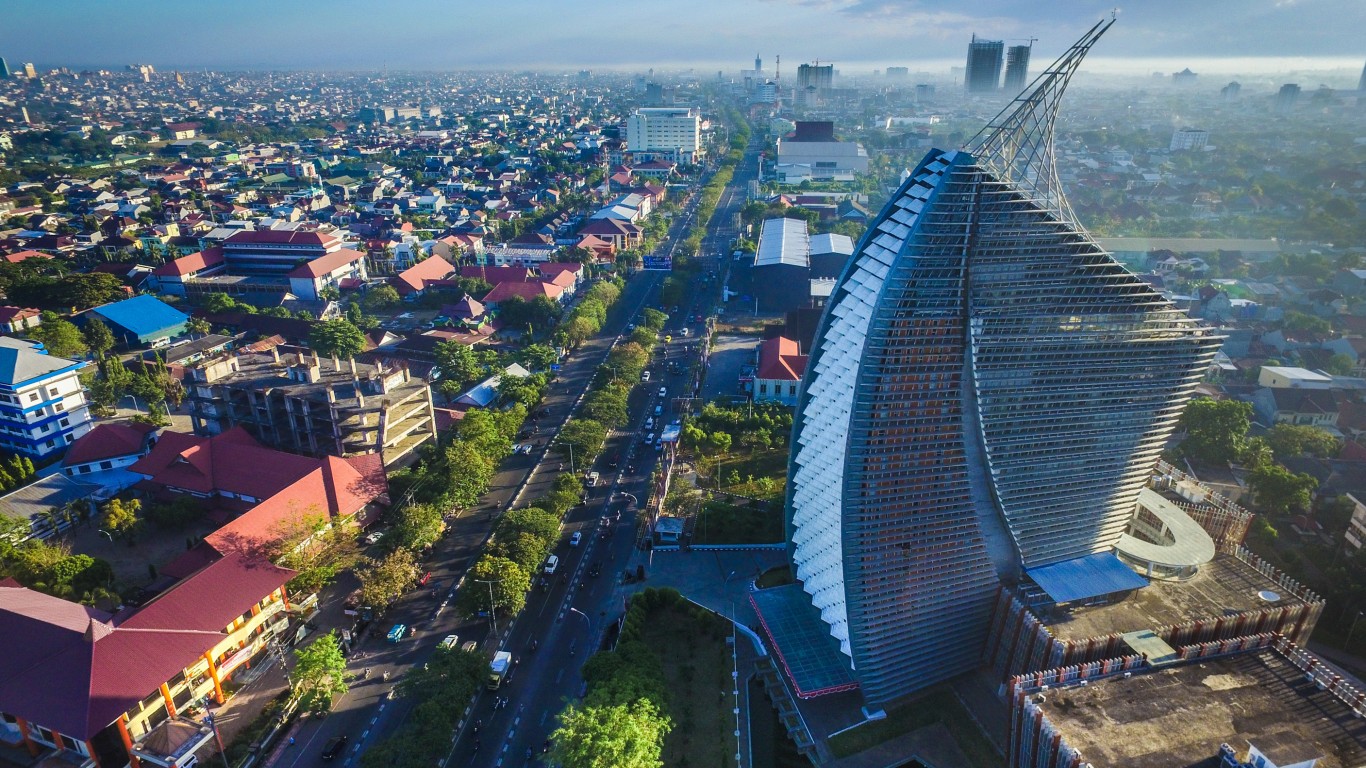
22. Makassar, Indonesia
> Population: 1.5 million
> Land area: 68.0 square miles
> People per square mile: 21,912.1
Makassar is an important port city for the South Sulawesi area of Indonesia. The city exports crops like cocoa, coffee, and cashews and is home to a number of fisheries. It also serves as a major air travel hub for the rest of Indonesia’s many islands. The Makassar area’s urban population grew rapidly in the 1970s and 1980s, but the growth has slowed since then.
[in-text-ad-2]

21. Medan, Indonesia
> Population: 2.2 million
> Land area: 102.3 square miles
> People per square mile: 21,965.3
Medan, Indonesia grew rapidly as an agricultural region after tobacco plantations were introduced there in 1873. Now, Medan’s industrial sector produces machinery and bricks. Medan is also one of the most diverse areas of the country, attracting people among the many different ethnic backgrounds found in Indonesia. The Medan urban area’s population grew by over one million between 1975 and 2000. It is now Indonesia’s fifth-largest metro area.
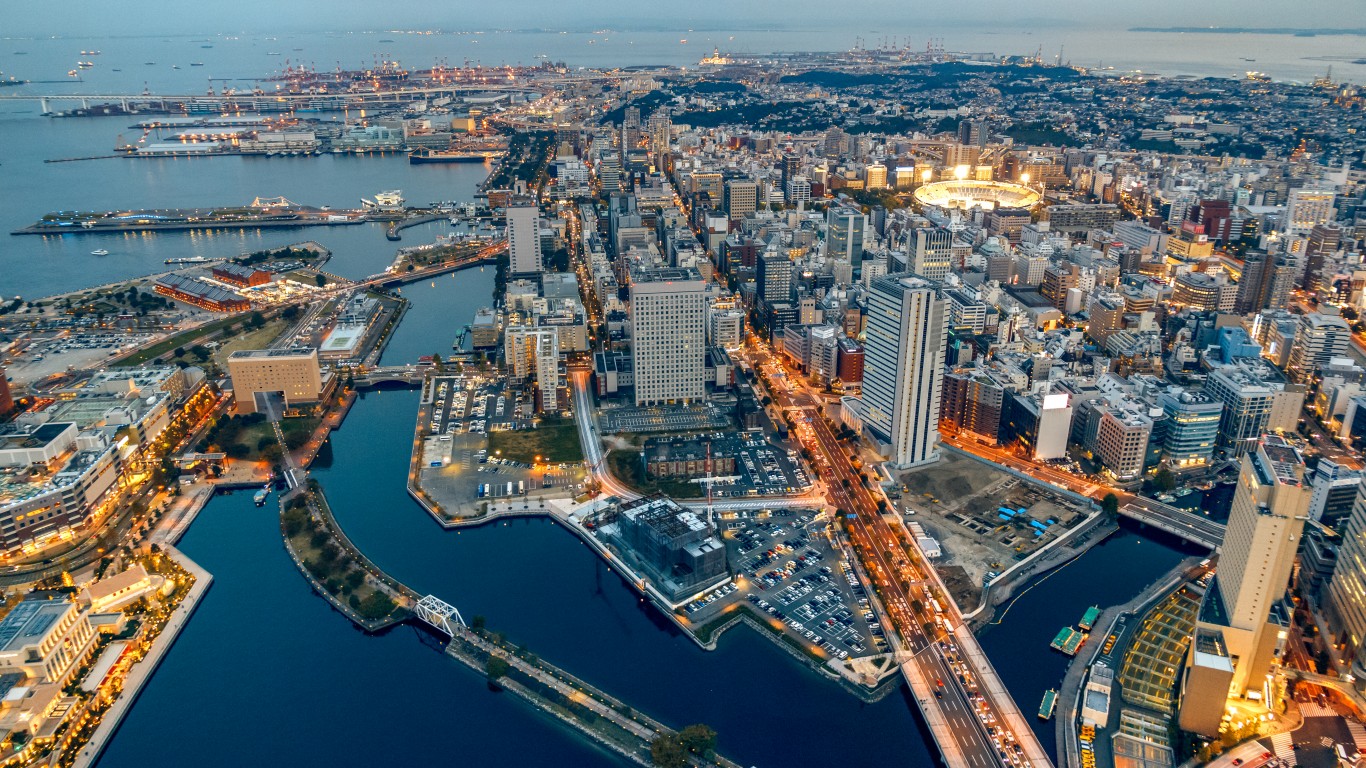
20. Yokohama, Japan
> Population: 3.7 million
> Land area: 168.7 square miles
> People per square mile: 22,076.2
Yokohama developed into one of Japan’s largest cities thanks to a policy enacted over 150 years ago. During Japan’s Edo Period, the country isolated itself from the rest of the world. But in 1859, Yokohama became one of the first cities opened to foreign trade, causing it to blossom from a small fishing village to Japan’s second-largest city with more than 3.7 million people.
[in-text-ad]
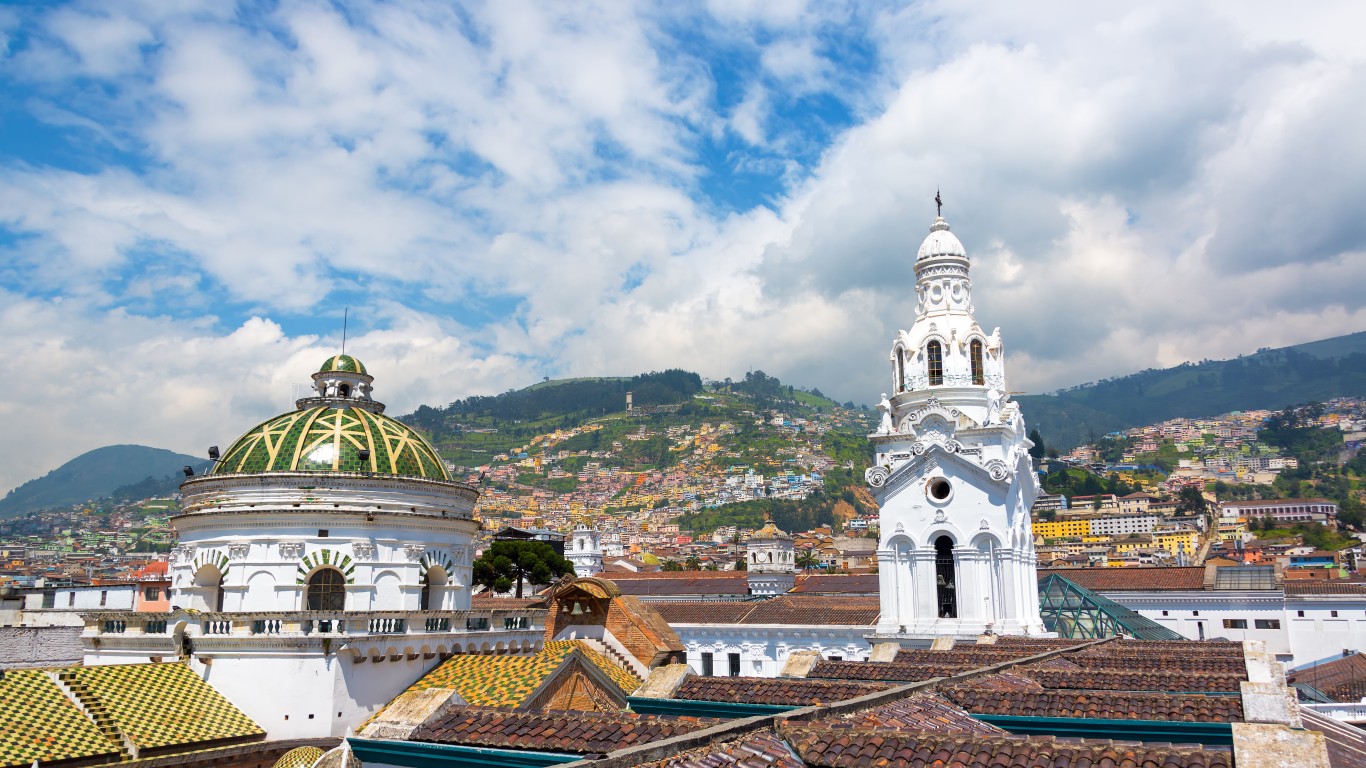
19. Quito, Ecuador
> Population: 1.8 million
> Land area: 69.9 square miles
> People per square mile: 25,448.2
Quito, Ecuador is encircled by a ring of volcanoes and sits at an elevation of 9,350 feet. Much of the city’s population — especially its poorer residents — live in the center of the city. At nearly 500 years old, Quito is one of the oldest cities in South America and many of its early buildings are fairly well-preserved. UNESCO named its historic center a World Heritage Site. Even though Ecuador has two cities — Quito and Guayaquil — among the most crowded in the world, it is a fairly rural country as a whole. The nation has a population density of roughly 25 people per square mile, one of the lowest in the world.

18. Battambang, Cambodia
> Population: 1.1 million
> Land area: 44.0 square miles
> People per square mile: 25,589.7
Battambang, like much of the rest of Cambodia, was thrown of course in the country’s civil war in the 1970s. Battambang served as a primary seat of power for the Khmer Rouge regime for over 20 years, until the group was ousted in 1997, since then it has grown rapidly, largely driven by an influx of Chinese investment, threatens much of the city’s culturally relevant ancient temples and French colonial architecture. The history of Battambang dates back to the 11th century.

17. Kawasaki, Japan
> Population: 1.5 million
> Land area: 55.2 square miles
> People per square mile: 26,718.8
Kawasaki, Japan was heavily damaged by Allied bombing campaigns during World War II, but the city now serves as a major industrial center for the country. Kawasaki sits in the middle of the Keihin Industrial Zone, which is home to steel and oil production facilities. The area’s growth has resulted overcrowding and pollution.
[in-text-ad-2]
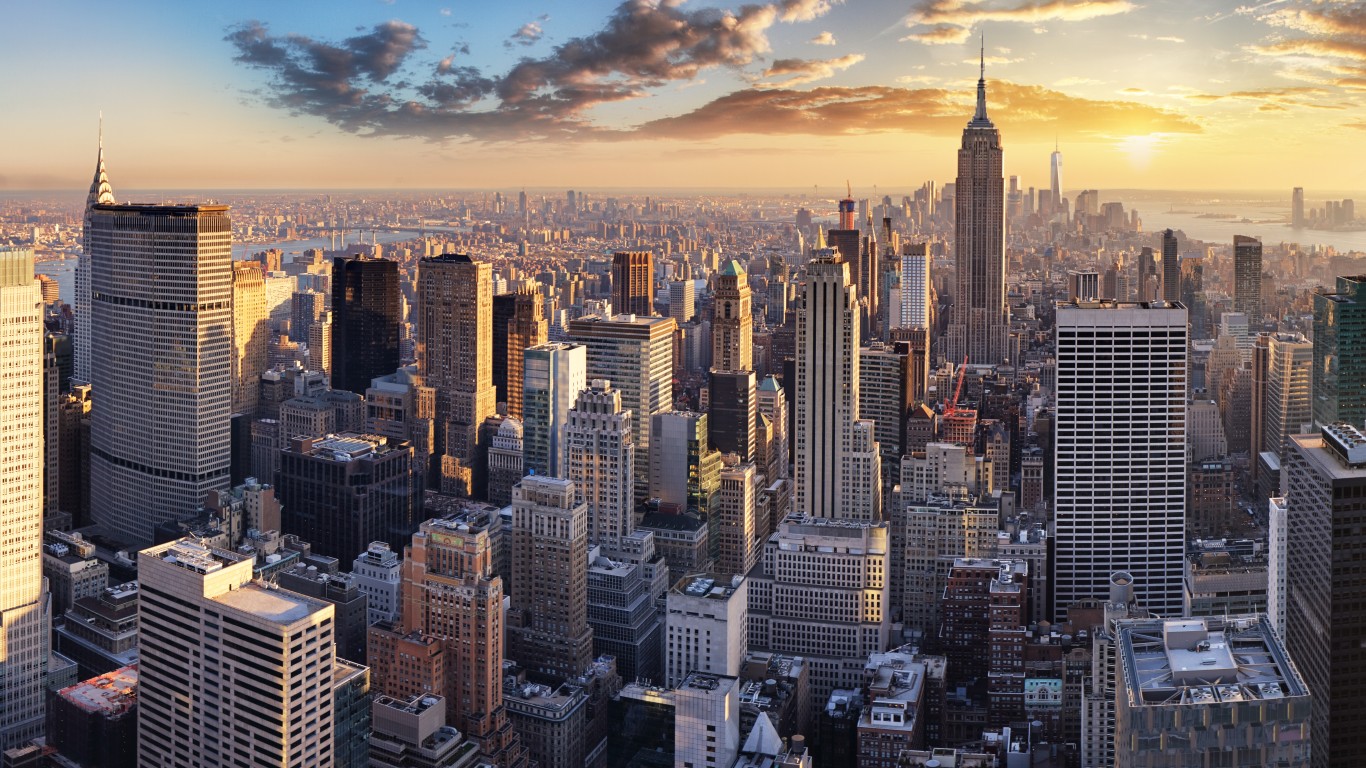
16. New York, United States
> Population: 8.5 million
> Land area: 301.5 square miles
> People per square mile: 28,313.0
New York City is one of the world’s cultural and financial hubs and the largest city in the United States. Despite being one of the most prohibitively expensive places to live in the country, the population continues to increase. Some 8.5 million people are spread out across the city’s five boroughs and more than 18.6 million live in the surrounding area. New York’s urban area actually shrank in population from 1970 to 1990, but the trend reversed with the area adding over 2 million people from 1990 to 2010.
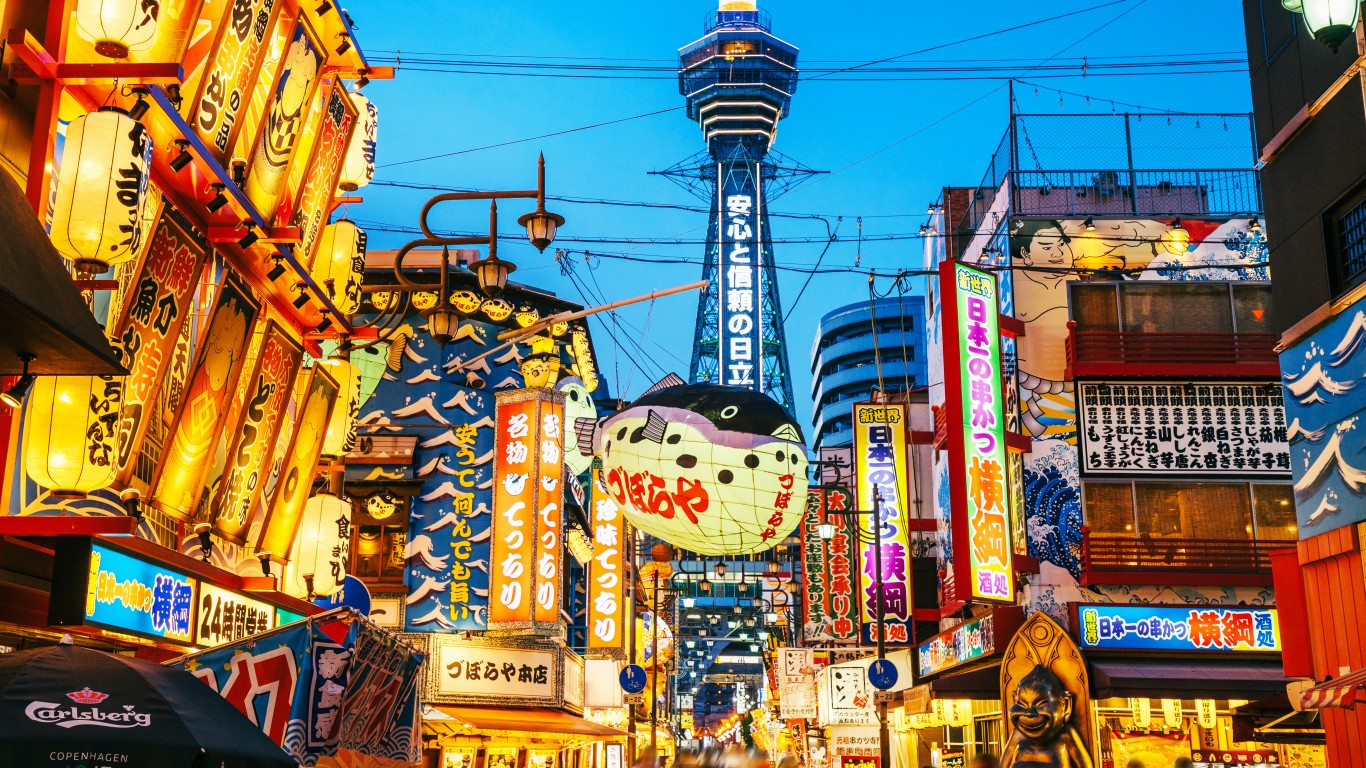
15. Osaka, Japan
> Population: 2.7 million
> Land area: 86.9 square miles
> People per square mile: 30,978.4
Osaka is known as “the nation’s kitchen” in Japan. This moniker came from the fact that it served as a major rice trading center prior to World War II. Now, Osaka has a reputation for being the cuisine capital of Japan. It even has a word — kuidaore — for eating oneself into bankruptcy. Osaka is one of many large and crowded cities in Japan, as 91.6% of the country lives in urban areas.
[in-text-ad]
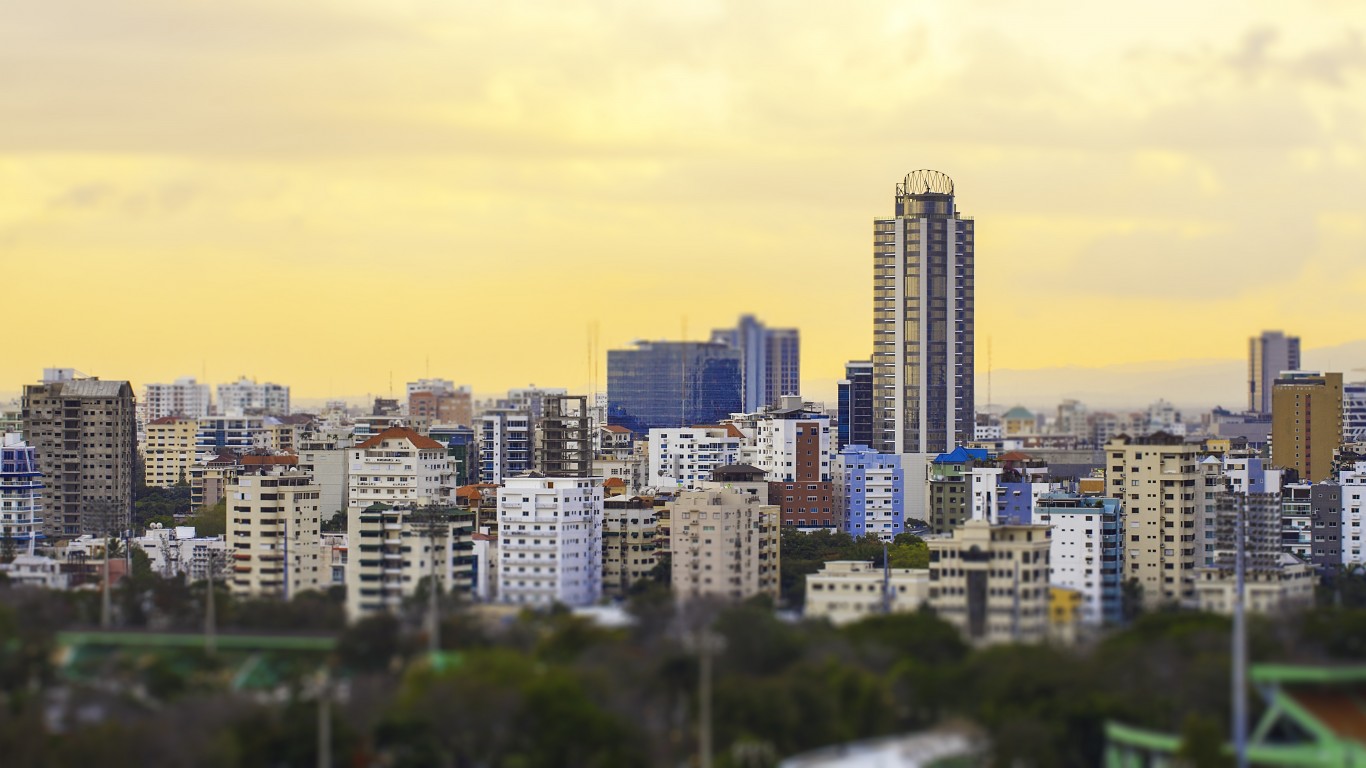
14. Santo Domingo, Dominican Republic
> Population: 1.1 million
> Land area: 35.1 square miles
> People per square mile: 32,056.3
After Christopher Columbus sailed from Spain to the Americas, he landed in Santo Domingo in 1492. It is the oldest permanent city in the Western Hemisphere that was founded by Europeans. Now under Dominican control, Santo Domingo has continued to flourish as the most important industrial and financial city in the Dominican Republic. Santo Domingo’s dense population is supported by hydroelectric dams that provide inexpensive power to residents.
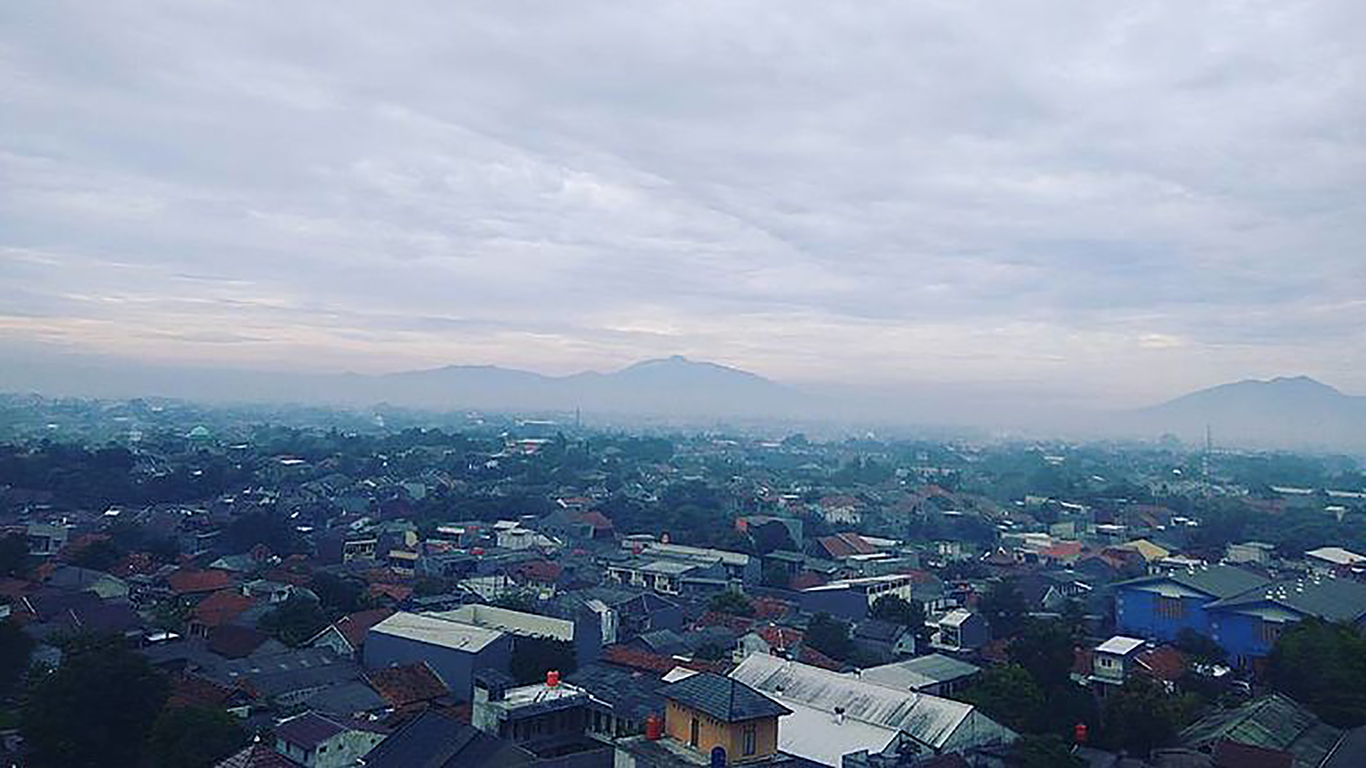
13. Tangerang, Indonesia
> Population: 2.1 million
> Land area: 59.5 square miles
> People per square mile: 35,988.9
The population of the Tangerang, Indonesia urban area has more than doubled in the past 25 years, making it one of the fastest growing population centers in the country. The 2.1 million area residents live in less than 60 square miles, meaning there are close to 36,000 people per square mile. Tangerang is one of Indonesia’s largest industrial centers.
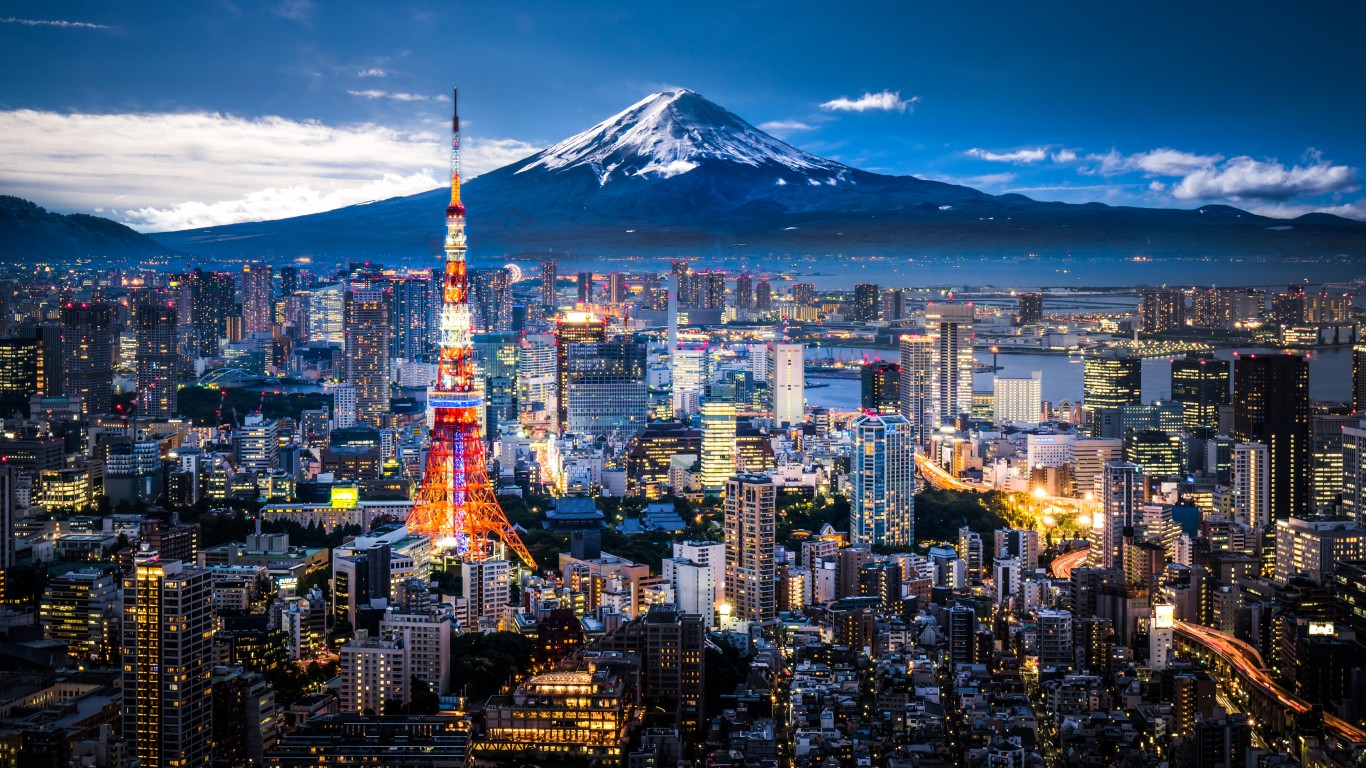
12. Tokyo, Japan
> Population: 9.3 million
> Land area: 242.1 square miles
> People per square mile: 38,303.5
Tokyo is Japan’s largest and most populous city, and has been for centuries. Tokyo is home to the country’s Imperial Palace, premier shopping districts, and more Michelin Star restaurants than anywhere else in the world. Tokyo has many options for entertainment, shopping and dining, attracting millions of residents. More than 37 million people live in the Tokyo urban area, nearly one third of Japan’s total urban population.
[in-text-ad-2]

11. Bandung, Indonesia
> Population: 2.5 million
> Land area: 64.9 square miles
> People per square mile: 38,509.7
The culture in Bandung tends to vary from other areas of Indonesia, as the population is largely made up of Sundanese people, whose customs, language, and faith tend to differ from those of the Javanese people who make up a large portion of Indonesia’s population. Possibly because of its mild climate and impressive scenery, one of Bandung’s largest economic areas is tourism. Residents also work in rubber, pharmaceutical, and textile production. Though Bandung is growing, its urban area makes up a lower share of Indonesia’s population at 1.9%, than it did 20 years ago when some 3.0% of Indonesian people lived in the Bandung area.

10. Barcelona, Spain
> Population: 1.6 million
> Land area: 39.7 square miles
> People per square mile: 40,505.9
Barcelona is Spain’s most crowded city — at least for now. The Catalonia region of Spain, where Barcelona is located, is making a push for independence. Many Catalonians believe the region provides too large of a share of Spain’s tax revenue yet receives few benefits from the federal government. Barcelona serves as a major port city for Spain and is a popular tourist destination because of its beautiful surroundings, architecture, and cuisine.
[in-text-ad]
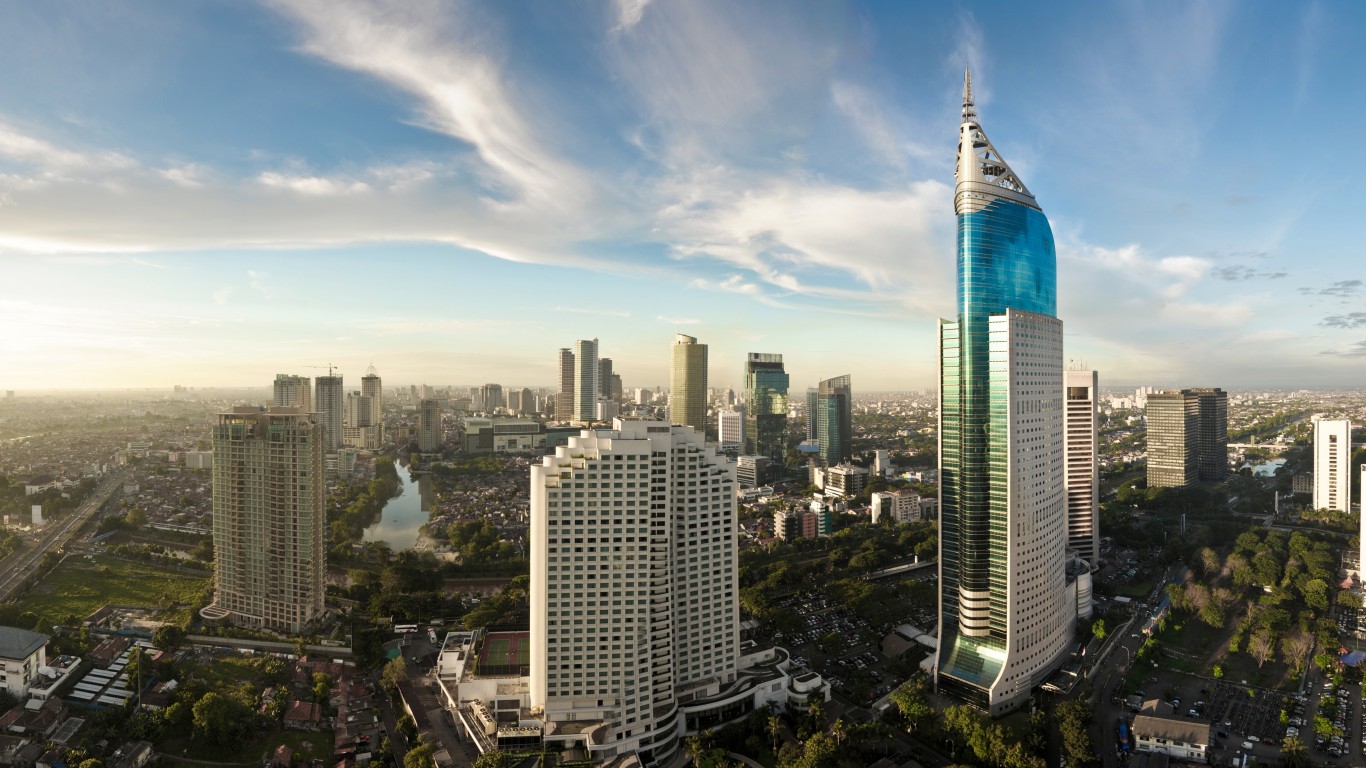
9. Jakarta, Indonesia
> Population: 10.4 million
> Land area: 255.6 square miles
> People per square mile: 40,587.8
While many of Indonesia’s cities are very crowded, none are more densely packed than Jakarta. Some 10.4 million people live on 255.6 square miles, making Jakarta the most populous city to also be among the most densely packed. Jakarta, which is the capital of Indonesia, experienced a massive building boom after World War II. The city’s first high-rise was built in 1962 and many others followed, mostly in the city’s financial center.
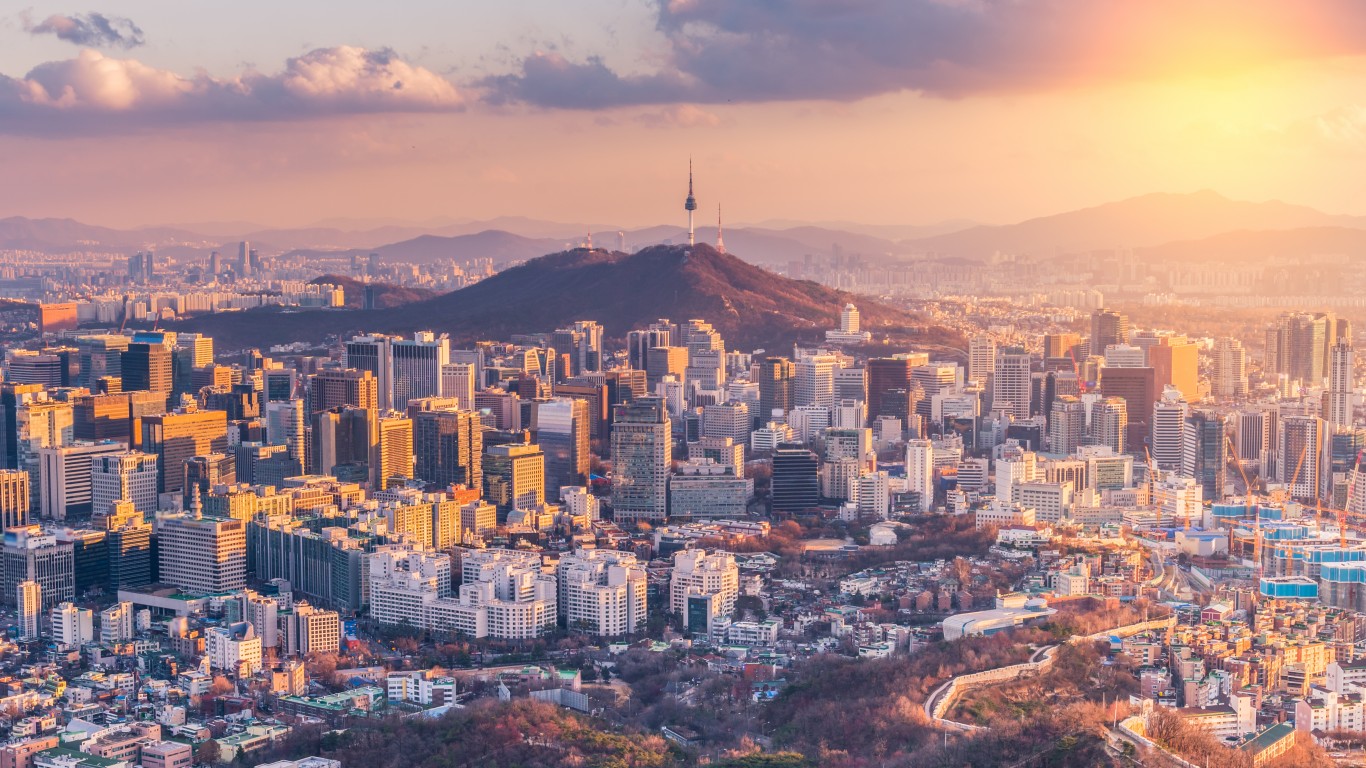
8. Seoul, South Korea
> Population: 9.8 million
> Land area: 233.6 square miles
> People per square mile: 42,102.0
Seoul, South Korea saw a massive population boom for decades after the Korean War. From 1960 to 1990, Seoul gained over 1 million new residents every five years. This massive influx has led to a chronic inadequacy of housing for some citizens. Many residents work in the manufacturing industry, especially in electronics.
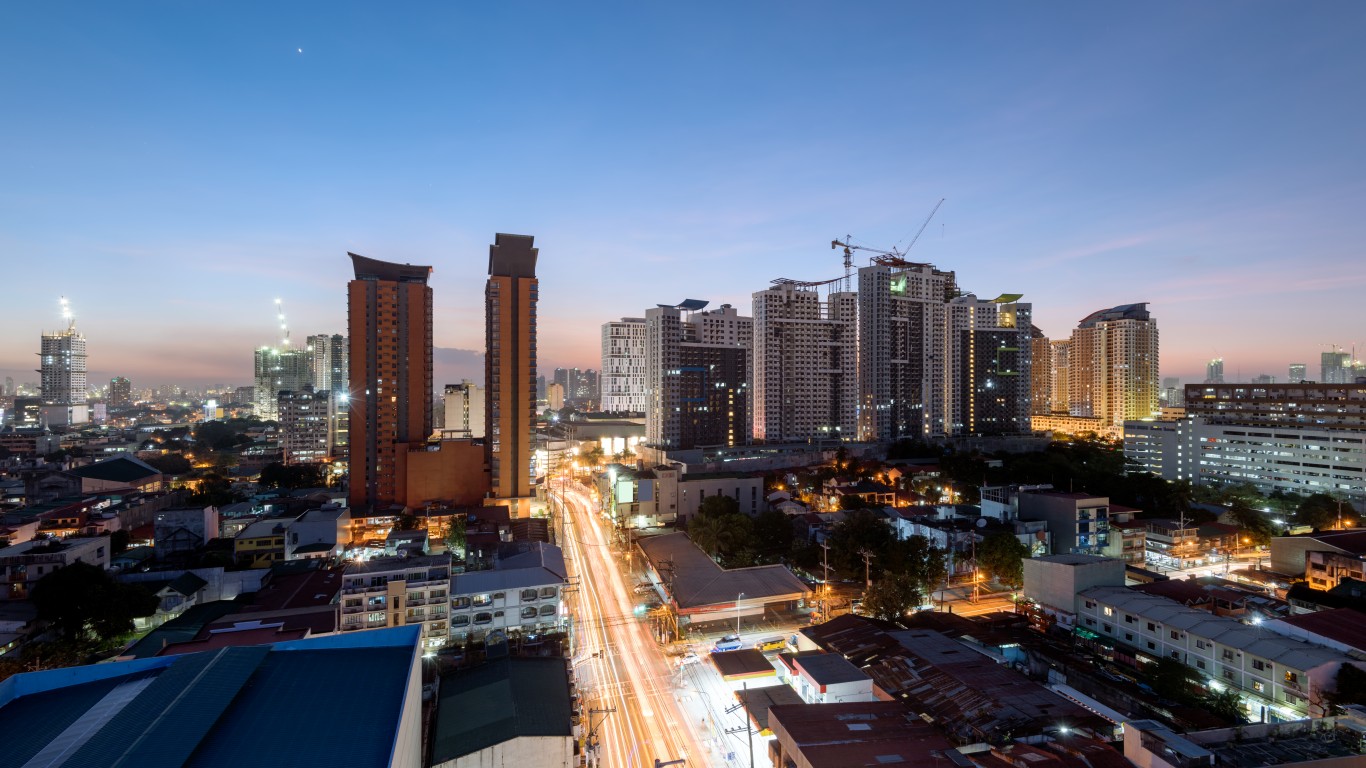
7. Quezon City, Philippines
> Population: 2.9 million
> Land area: 66.3 square miles
> People per square mile: 44,286.9
Quezon City, named for former Philippines President Manuel Luis Quezon, served as the nation’s capital from 1948 to 1976. Many of the residents there live in large housing projects constructed to give low-income government workers somewhere to live. Yet there are also many other wealthy residential sectors.
[in-text-ad-2]
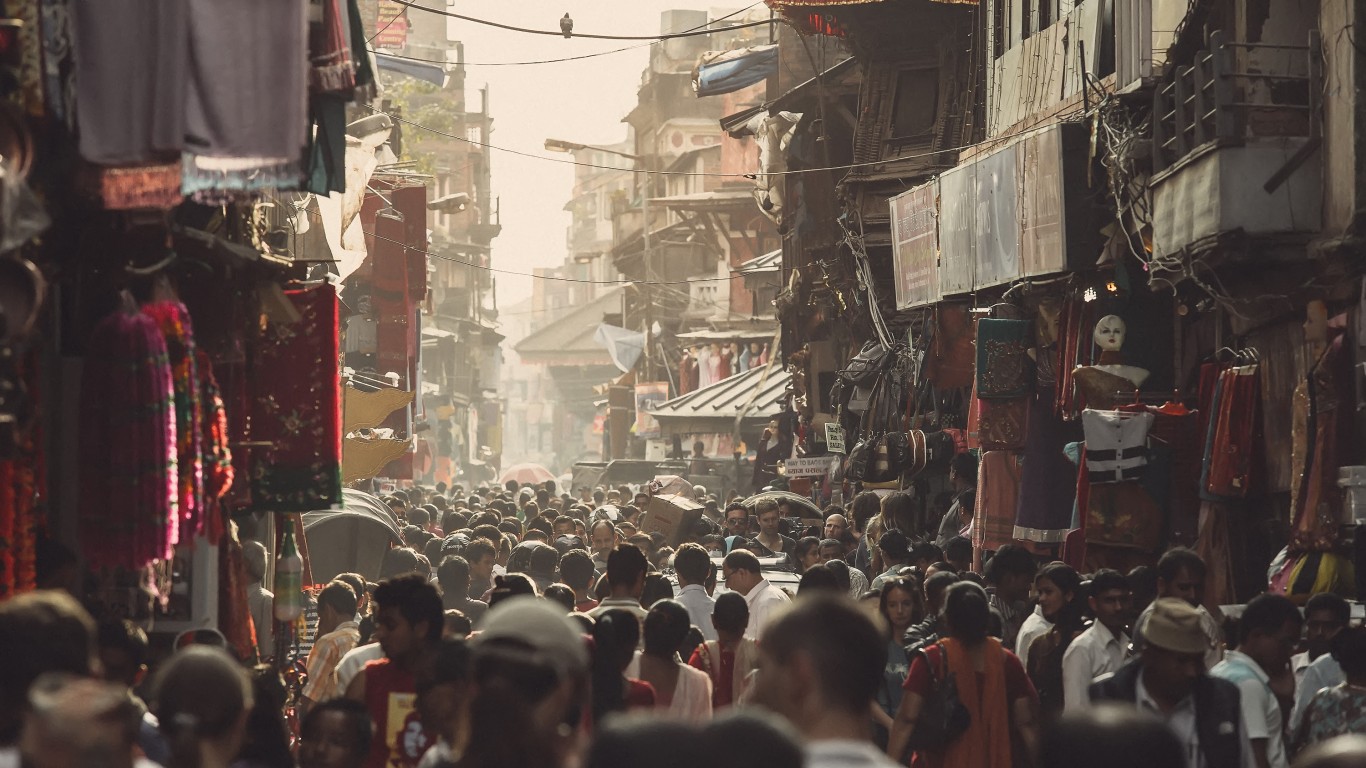
6. Kathmandu, Nepal
> Population: 1.0 million
> Land area: 18.9 square miles
> People per square mile: 53,030.6
Kathmandu is the most populous city and capital of Nepal. Its ancient temples and architecture are surrounded by newer, more high-tech buildings that are springing up. The city sits at the foot of the Himalayas. Kathmandu was devastated by a powerful earthquake in 2015. Roughly 9,000 people were killed and 600,000 buildings were affected, many of which were demolished. Nepal is an unlikely entry on this list, as just 19.7% of the country’s residents live in urban areas, one of the lowest rates in the world.

5. Paris, France
> Population: 2.2 million
> Land area: 40.5 square miles
> People per square mile: 55,347.6
Paris is one of the most popular tourist destinations in Europe and the world. Known for its fashion, cuisine, and culture, Paris is one of the very few crowded cities in Europe to make this list. While the city proper has some 2.2 million residents, the urban sprawl outside its city limits is extensive. Some 10.5 million people live in the urban agglomeration surrounding the French capital.
[in-text-ad]
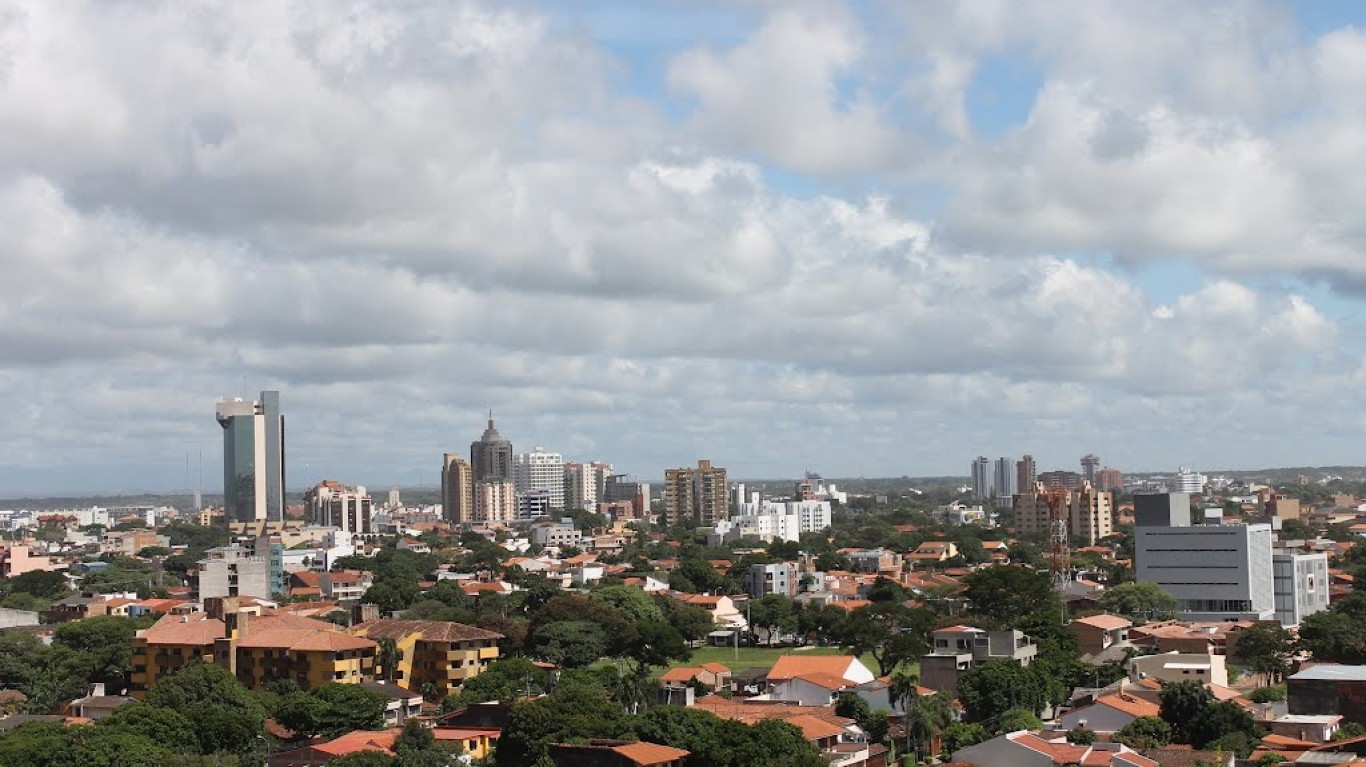
4. Santa Cruz, Bolivia
> Population: 1.6 million
> Land area: 14.9 square miles
> People per square mile: 108,463.0
Santa Cruz has grown rapidly, even overtaking Bolivia’s capital of La Paz as the largest city in the country by a significant margin. The Santa Cruz urban area has grown by over 100,000 residents every five years since 1980. This expansion is largely due to agricultural and energy industries. Soybean and sugarcane provide agricultural work and oil refining has become an essential part of Bolivia’s economy.

3. Manila, Philippines
> Population: 1.8 million
> Land area: 9.6 square miles
> People per square mile: 184,570.2
Manila, the capital of the Philippines, packs 1.8 million residents into just 9.6 square miles. This high population density, 184,570 people per square mile, has led to pollution and traffic issues. As a port city on the island of Luzon, Manila counts shipping as one of its chief economic drivers.

2. Phnom Penh, Cambodia
> Population: 1.6 million
> Land area: 8.1 square miles
> People per square mile: 193,730.1
The brutal Khmer Rouge regime forced many residents of Phnom Penh, Cambodia out of the city and into the countryside in 1975. After the regime was ousted from power in 1979, Phnom Penh’s population slowly returned. The city sits at the confluence of three major rivers, making it an ideal trading spot.
[in-text-ad-2]

1. Ulaanbaatar, Mongolia
> Population: 1.4 million
> Land area: 1.9 square miles
> People per square mile: 734,711.6
Detailed findings & methodology:
Ulaanbaatar, Mongolia is the most crowded city in the world, with 1.4 million residents sharing less than two square miles. The Mongolian capital’s mayor even restricted migration to the city in 2017 to try and curb the issue, as Ulaanbaatar is already in the midst of a housing crisis. Most of the city’s population lives in unplanned neighborhoods. These hastily constructed living spaces may be vulnerable to natural disasters like earthquakes and typically have no central heating.
Some 21 of the world’s 30 most crowded cities are in Asia. Indonesia is home to six of these cities, followed by Japan, which has five, and the Philippines and Cambodia with two apiece. From 2000 to 2010, population density in large Asian cities increased more quickly than researchers predicted. Just five of the most crowded cities in the world are in Latin America; three of them are in Europe; and just one — New York City — is in North America.
Asia’s population density is nearly 55 people per square mile. The next most-crowded continent is Africa with 15.6 people per square mile. Europe and Latin America have very similar population densities, with 12.9 and 12.1 people per square mile, respectively. North America is much more spread out, with 7.4 people per square mile. Oceania is by far the roomiest continent, with just 1.8 people per square mile.
These numbers are estimates, as it would be virtually impossible to count the exact number of people in these large cities and urban areas. Some countries, even large ones like India and China, do not have data on their urban populations and surface area available for the most recent United Nations Demographic Yearbook, which makes it impossible to determine their population densities. As such, Chinese and Indian cities, as well as others, are not included on this list.
To determine the most crowded cities in the world, 24/7 Wall St. reviewed population and land area estimates for the city proper using data from the United Nations’ Demographic Yearbook. The UN defines the city proper as a locality with legally fixed boundaries and an administratively recognized urban status. All cities on this list, except for Santo Domingo, Dominican Republic relied on population and surface area data based on the city proper. Santo Domingo was ranked based on the population and surface area of its urban agglomeration. Major metropolitan areas that lacked either population figures or surface area data were not considered.
Take This Retirement Quiz To Get Matched With An Advisor Now (Sponsored)
Are you ready for retirement? Planning for retirement can be overwhelming, that’s why it could be a good idea to speak to a fiduciary financial advisor about your goals today.
Start by taking this retirement quiz right here from SmartAsset that will match you with up to 3 financial advisors that serve your area and beyond in 5 minutes. Smart Asset is now matching over 50,000 people a month.
Click here now to get started.
Thank you for reading! Have some feedback for us?
Contact the 24/7 Wall St. editorial team.
 24/7 Wall St.
24/7 Wall St. 24/7 Wall St.
24/7 Wall St. 24/7 Wall St.
24/7 Wall St.

